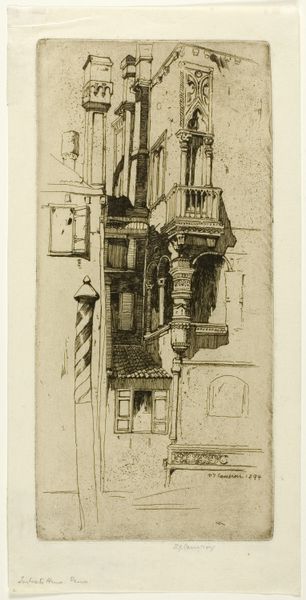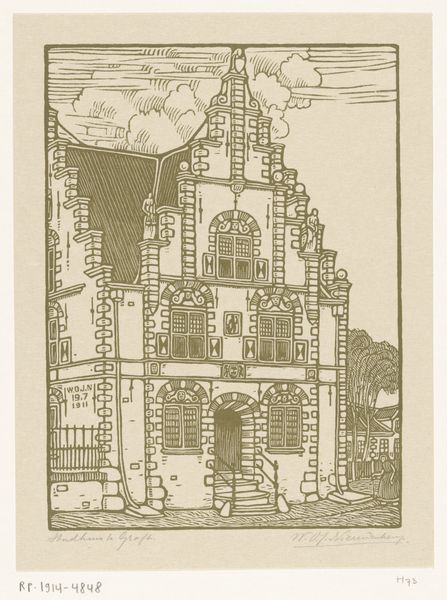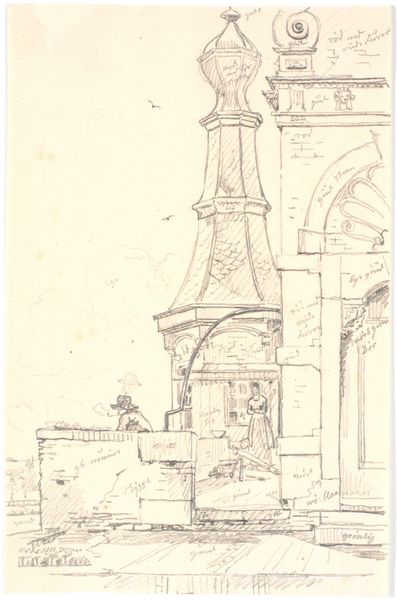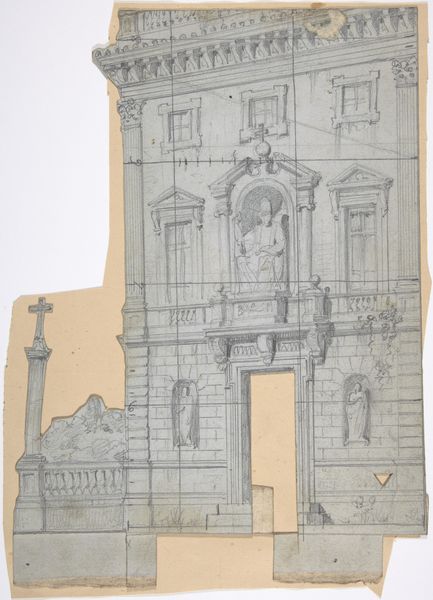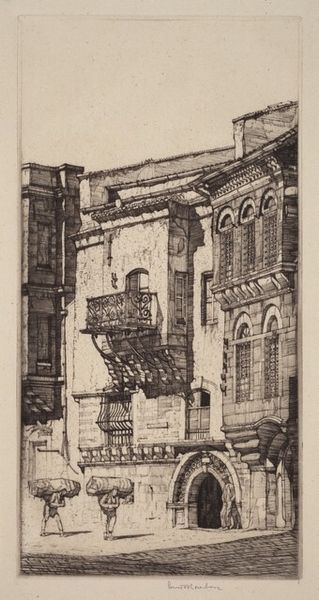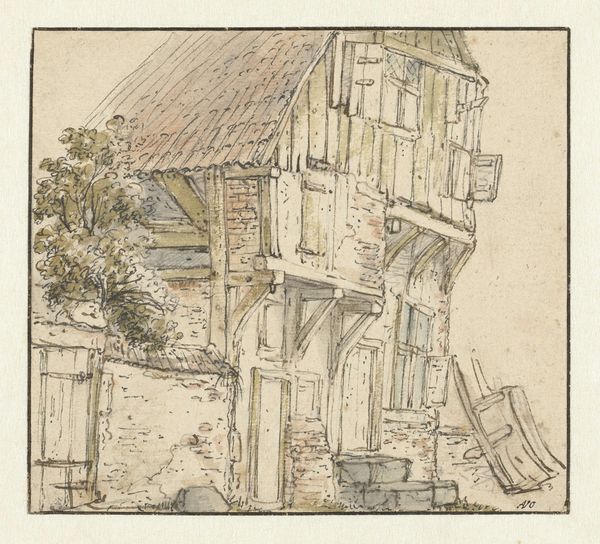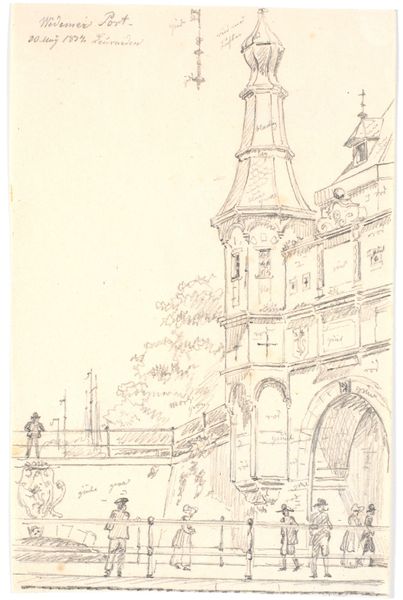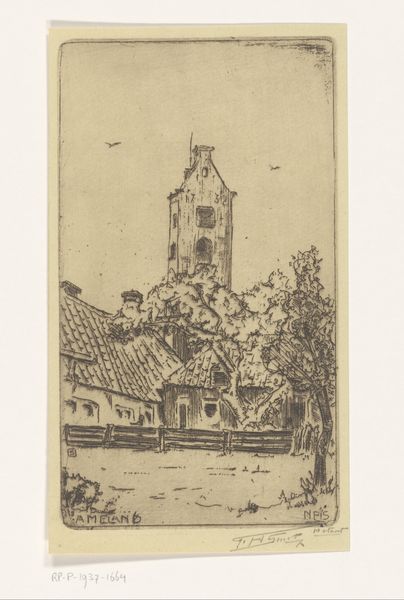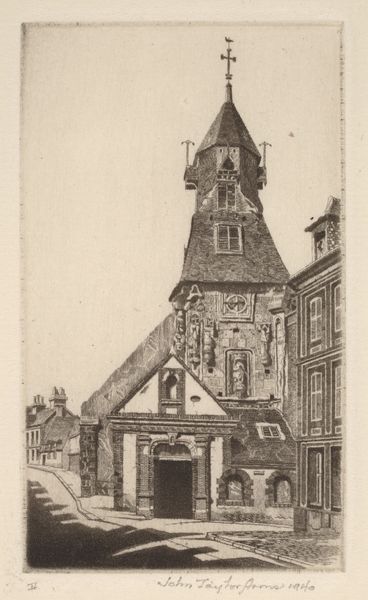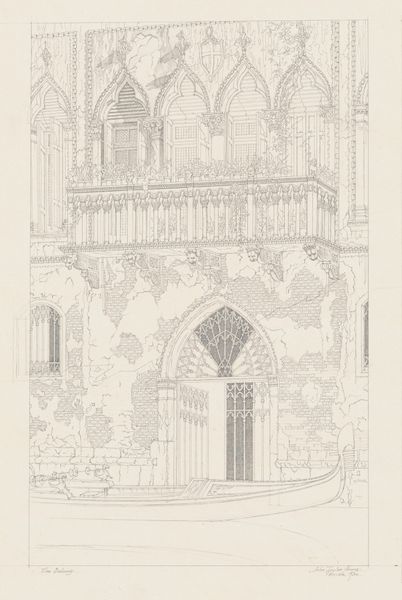
Binnenplaats met twee vrouwen te Boppard in Duitsland 1836 - 1912
0:00
0:00
isaacweissenbruch
Rijksmuseum
drawing, ink, pen
#
drawing
#
pen sketch
#
pencil sketch
#
ink
#
pen
#
cityscape
#
genre-painting
Dimensions: height 198 mm, width 127 mm
Copyright: Rijks Museum: Open Domain
Editor: This pen and ink drawing is called "Courtyard with Two Women in Boppard, Germany" by Isaac Weissenbruch, dating somewhere between 1836 and 1912. It's got such a striking sense of depth, and the architectural details are amazing! What do you see in this piece? Curator: I see layers of time and cultural memory etched in ink. The cityscape, dominated by that oriel window dated 1637, speaks of a specific moment in architectural history. Yet, the women in the foreground, seemingly engaged in laundry, introduce a timeless element of daily life. It’s the intersection of grand design and the mundane. Editor: So the artist is juxtaposing public and private spheres, you mean? The architecture versus everyday activities? Curator: Precisely! Notice how the rigid lines of the buildings contrast with the fluid, almost impressionistic rendering of the women and the draped fabric. The architectural details symbolize order, perhaps even a sense of civic pride, while the women represent a softer, more organic rhythm of life. It's a dialogue between permanence and transience, would you agree? Editor: Absolutely! And the light and shadow contribute to that feeling. Is there a reason why the artist might choose to highlight this contrast between stability and fleeting moments? Curator: Perhaps it’s a meditation on history itself. The imposing structure stands as a monument to the past, but it’s continually inhabited, its story ongoing through the actions of ordinary people. What does this imply for what we see and choose to preserve? It asks how structures may only become symbols of heritage. Editor: I see. It's as if the building becomes a backdrop for human stories. That tension is really thought-provoking. Curator: It certainly is. The layers of time are quite apparent, and it reminds us that buildings can become canvases of cultural and social happenings that transcend what may seem rigid at first glance. Editor: I’ve never thought of it that way before, thank you! I now realize that architecture is not static, but a background for our history to come alive.
Comments
No comments
Be the first to comment and join the conversation on the ultimate creative platform.

